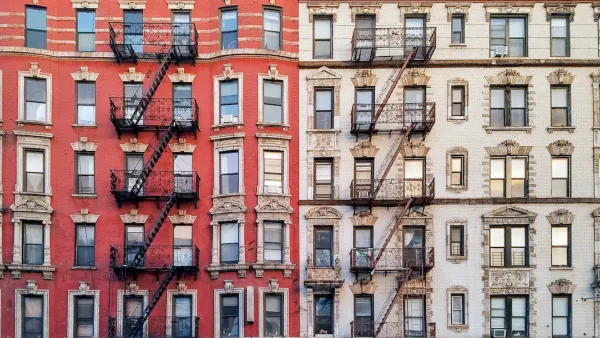A New York Times feature details the re-emergence of the single room occupancy (SRO) unit in the New York rental market. Despite a stigma and an old-fashioned quality, the SRO is becoming a badly needed housing solution.

New York City's rental market "is moving toward a rent-by-the-room model," according to an article by Kim Velsey, as "a response to the imbalance between New York’s large single population and the prohibitively high cost of living alone, and, perhaps not coincidentally, a model that thrived in the last century."
"Although only buildings zoned for single room occupancy, or S.R.O.s, can rent by the room, the market has increasingly found ways to legally — and not so legally — accommodate those seeking rooms rather than apartments," explains Velsey.
"Alternatives range from relatively low-cost apartment shares, wherein brokers represent apartments with multiple bedrooms and help renters find roommates to bring the cost per person down to as low as $650 a month, to luxurious, all-inclusive shared suites in co-living developments, where rooms are priced at as much as $2,900 a month," Velsey adds.
The article includes multiple anecdotes of renters navigating the new/old rental market, and some of the new business models and development models that have sprung up in response to the need for affordable rental housing.
The article also includes details of the rooms-for-rent model of New York's past. It was only the end of World War II, for instance when rooms-for-rent hit a peak in the city at 200,000 available units (currently the city has 35,000 SROs). Luminaries such as Grace Kelly, Liza Minnelli, and Joan Didion all once lived in one particular famous example of a SRO boarding house—the Barbizon Hotel.
FULL STORY: Return of the S.R.O., With a Twist

Analysis: Cybertruck Fatality Rate Far Exceeds That of Ford Pinto
The Tesla Cybertruck was recalled seven times last year.

National Parks Layoffs Will Cause Communities to Lose Billions
Thousands of essential park workers were laid off this week, just before the busy spring break season.

Retro-silient?: America’s First “Eco-burb,” The Woodlands Turns 50
A master-planned community north of Houston offers lessons on green infrastructure and resilient design, but falls short of its founder’s lofty affordability and walkability goals.

Test News Post 1
This is a summary

Analysis: Cybertruck Fatality Rate Far Exceeds That of Ford Pinto
The Tesla Cybertruck was recalled seven times last year.

Test News Headline 46
Test for the image on the front page.
Urban Design for Planners 1: Software Tools
This six-course series explores essential urban design concepts using open source software and equips planners with the tools they need to participate fully in the urban design process.
Planning for Universal Design
Learn the tools for implementing Universal Design in planning regulations.
EMC Planning Group, Inc.
Planetizen
Planetizen
Mpact (formerly Rail~Volution)
Great Falls Development Authority, Inc.
HUDs Office of Policy Development and Research
NYU Wagner Graduate School of Public Service




























